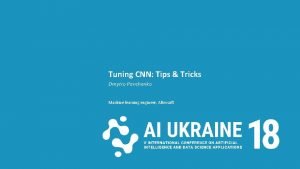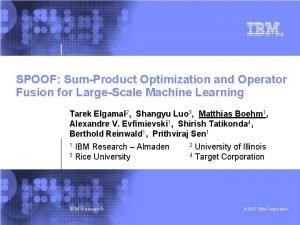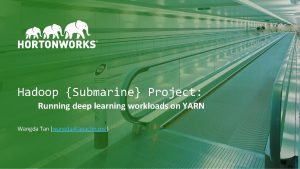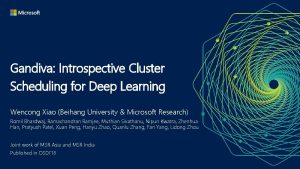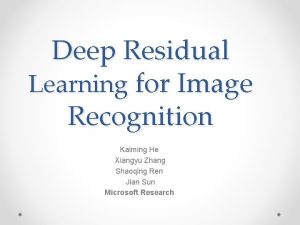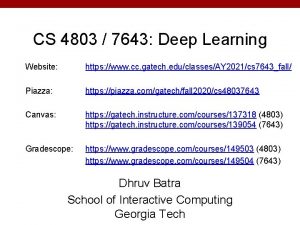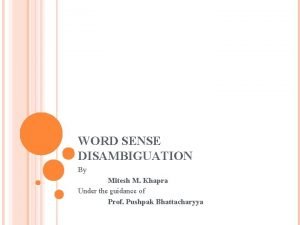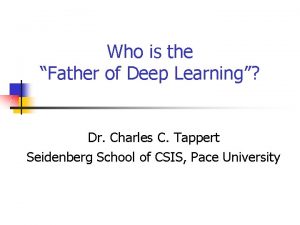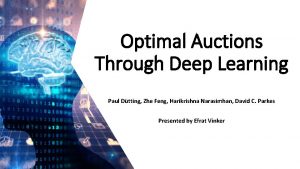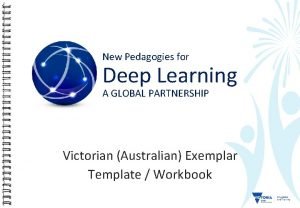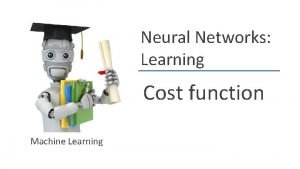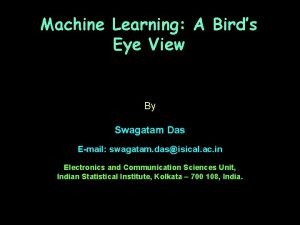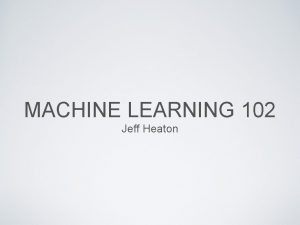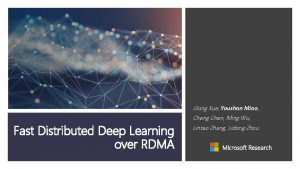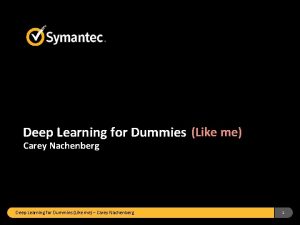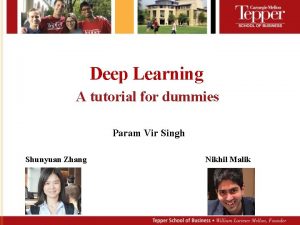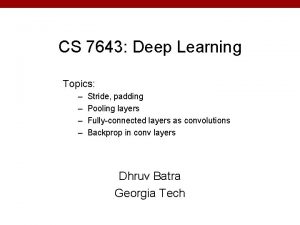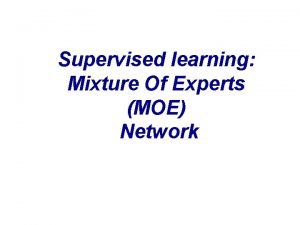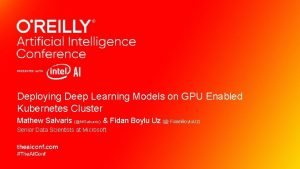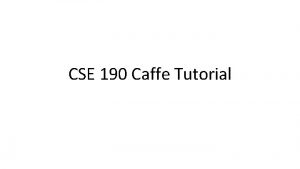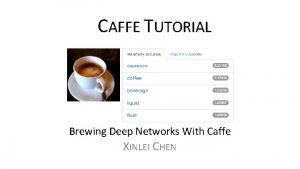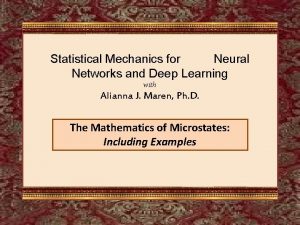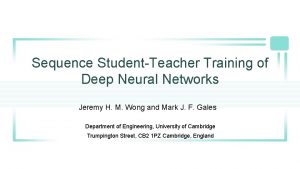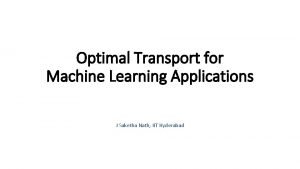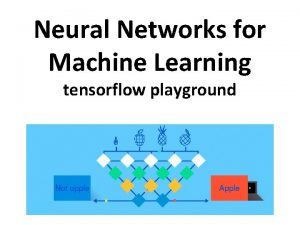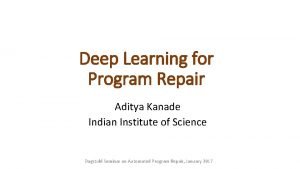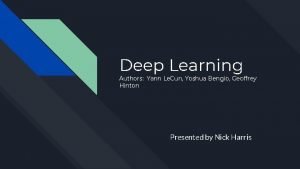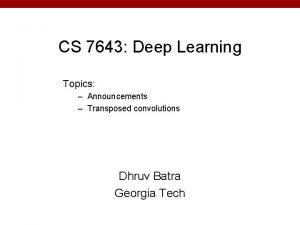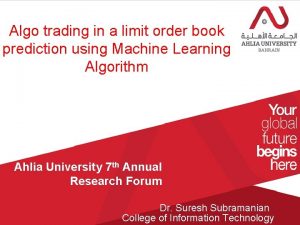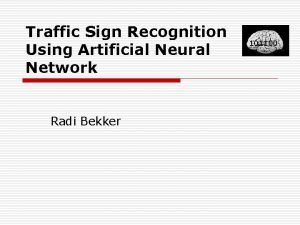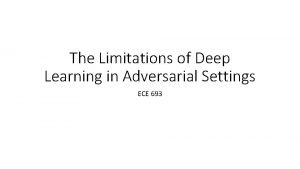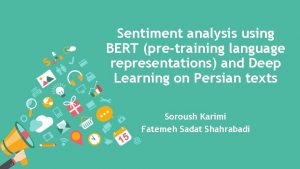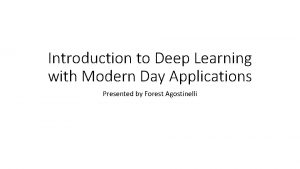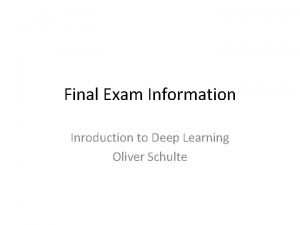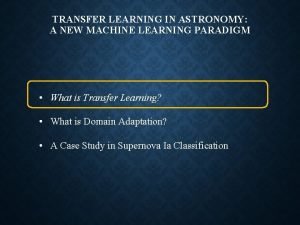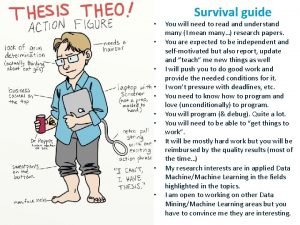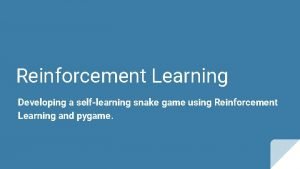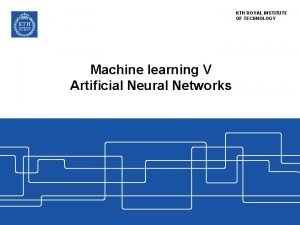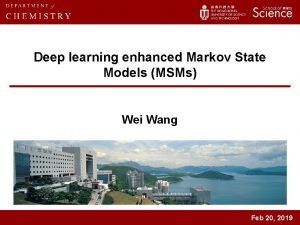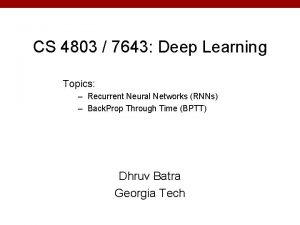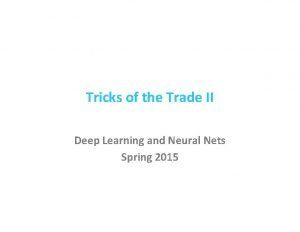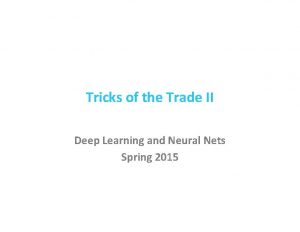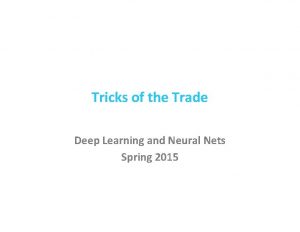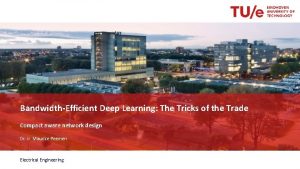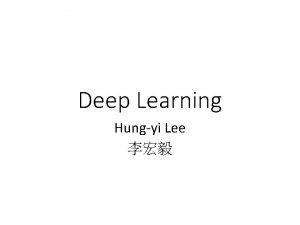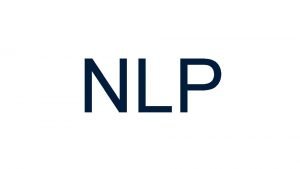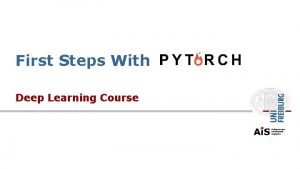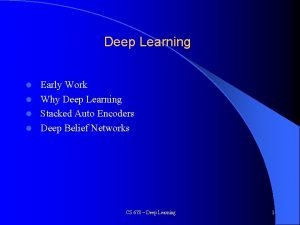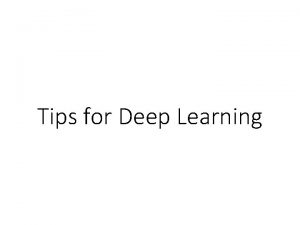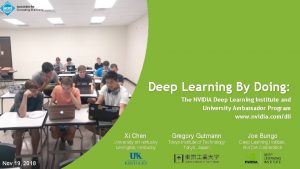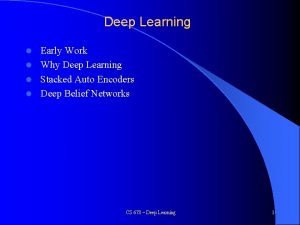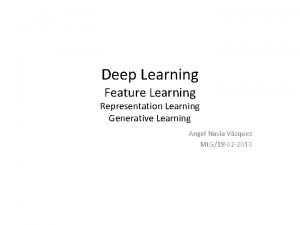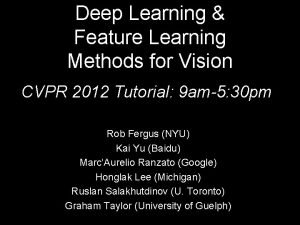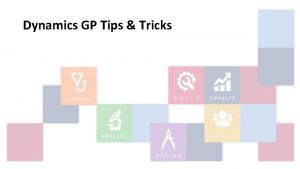Deep Learning for Vision Tricks of the Trade





































































![CHOOSING THE ARCHITECTURE Task dependent Cross-validation [Convolution → LCN → pooling]* + fully connected CHOOSING THE ARCHITECTURE Task dependent Cross-validation [Convolution → LCN → pooling]* + fully connected](https://slidetodoc.com/presentation_image_h/3047c0684402acbdd1d51a0104d6082f/image-70.jpg)










- Slides: 80

Deep Learning for Vision: Tricks of the Trade Marc'Aurelio Ranzato Facebook, AI Grou www. cs. toronto. edu/~ranzato BAVM Friday, 4 October 2013

Ideal Features Ideal Feature Extractor - window, right - chair, left - monitor, top of shelf - carpet, bottom - drums, corner -… - pillows on couch Q. : What objects are in the image? Where is the lamp? What is on the couch? . . . Ranzato

The Manifold of Natural Images

Ideal Feature Extraction Pose Pixel n Ideal Feature Extractor Pixel 2 Pixel 1 Expression Ranzato

Learning Non-Linear Features Given a dictionary of simple non-linear functions: Proposal #1: linear combination + Proposal #2: composition Ranzato

Learning Non-Linear Features Given a dictionary of simple non-linear functions: Proposal #1: linear combination Kernel learning Boosting. . . Shallow Proposal #2: composition Deep learning Scattering networks (wavelet cascade) S. C. Zhou & D. Mumford “grammar” Deep Ranzato

Linear Combination prediction of class + . . . templete matchers quire an exponential nr. of templates!!! Input image Ranzato

Composition . . . prediction of class gh-level parts mid-level parts reuse intermediate parts distributed representations ow level parts GOOD: (exponentially) more efficie Input image Lee et al. “Convolutional DBN's. . . ” ICML 2009, Zeiler & Fergus Ranzato

A Potential Problem with Deep Learning Optimization is difficult: non-convex, non-linear system Ranzato

A Potential Problem with Deep Learning Optimization is difficult: non-convex, non-linear system k-Means Pooling Clas SIFT Solution #1: freeze first N-1 layer (engineer the features) It makes it shallow! - How to design features of features? - How to design features for new imagery? Ranzato

A Potential Problem with Deep Learning Optimization is difficult: non-convex, non-linear system Solution #2: live with it! It will converge to a local minimum It is much more powerful!! Given lots of data, engineer less and learn more!! Just need to know a few tricks of the trade. . . Ranzato

Deep Learning in Practice Optimization is easy, need to know a few tricks of the trade. Q: What's the feature extractor? And what's the classifier? A: No distinction, end-to-end learning! Ranzato

Deep Learning in Practice It works very well in practice: Ranzato

KEY IDEAS: WHY DEEP LEARNING We need non-linear system We need to learn it from data Build feature hierarchies Distributed representations Compositionality End-to-end learning Ranzato

What Is Deep Learning? Ranzato

Buzz Words It's a Convolutional Net It's a Contrastive Divergence It's a Feature Learning It's a Unsupervised Learning It's just old Neural Nets It's a Deep Belief Net Ranzato

(My) Definition A Deep Learning method is: a method which makes p Some deep learning methods are probabilistic, others are los It's a large family! Ranzato

1957 Rosenblatt Perceptron THE SPACE OF MACHINE LEARNING METHODS

Neural Net Perceptron 80 s back-propagation & compute power Autoencoder. Neural Net

Recurrent Neural Net Convolutional Neural Net Perceptron Neural Net 90 s Le. Cun's CNNs Autoencoder. Neural Net Sparse Coding GMM

Recurrent Neural Net Boosting Convolutional Neural Net Perceptron Neural Net 00 s SVM Autoencoder. Neural Net Sparse Coding GMM Restricted BM

Recurrent Neural Net Boosting Convolutional Neural Net Perceptron Neural Net 2006 Hinton's DBN SVM Autoencoder. Neural Net Sparse Coding GMM Deep Belief Net Bayes. NP Restricted BM

2009 Recurrent Neural Net Boosting Convolutional Neural Net Perceptron Neural Net 2009 ASR (data + GPU) SVM Deep (sparse/denoising) Autoencoder. Neural Net Sparse Coding SP GMM Deep Belief Net Bayes. NP Restricted BM

Recurrent Neural Net Boosting Convolutional Neural Net Perceptron Neural Net 2012 CNNs (data + GPU) SVM Deep (sparse/denoising) Autoencoder. Neural Net Sparse Coding SP GMM Deep Belief Net Bayes. NP Restricted BM

Recurrent Neural Net Boosting Convolutional Neural Net Perceptron SVM Deep (sparse/denoising) Autoencoder. Neural Net Sparse Coding SP GMM Deep Belief Net Bayes. NP Restricted BM

Convolutional Neural Net 2012 TIME Convolutional Neural Net 1998 Convolutional Neural Net 1988 Q. : Did we make any prgress since then? A. : The main reason for the breakthrough is: data and GPU, but we have

Conv. Nets: History - Fukushima 1980: designed network with same basic structure but di - Le. Cun from late 80 s: figured out backpropagation for CNN, popul - Poggio from 1999: same basic structure but learning is restricted to - Le. Cun from 2006: unsupervised feature learning - Di. Carlo from 2008: large scale experiments, normalization layer - Le. Cun from 2009: harsher non-linearities, normalization layer, learn - Mallat from 2011: provides a theory behind the architecture - Hinton 2012: use bigger nets, GPUs, more data Le. Cun et al. “Gradient-based learning applied to document recognition” IEEE 1998

Conv. Nets: till 2012 Common wisdom: training does not work becaus Loss parameter

Conv. Nets: today Local minima are all similar, there are long plateaus, it can take long time to break symmetries. Loss w input/output invariant to permutations w breaking ties between parameters Saturating units parameter

Like walking on a ridge between valleys

Conv. Nets: today Local minima are all similar, there are long platea Loss Optimization is not the real problem when: – dataset is large – unit do not saturate too much – normalization layer parameter

Conv. Nets: today Loss Today's belief is that the challenge is about: – generalization How many training samples to fit 1 B parameters? How many parameters/samples to model spaces with 1 M dim. ? – scalability parameter

Recurrent Neural Net Boosting Convolutional Neural Net Perceptron SHALLOW SVM Deep (sparse/denoising) Autoencoder. Neural Net Sparse Coding SP GMM Deep Belief Net Bayes. NP Restricted BM

Recurrent Neural Net Boosting Convolutional Neural Net Perceptron SHALLOW SUPERVISED SVM Autoencoder. Neural Net Deep (sparse/denoising) Autoencoder. UNSUPERVISED Sparse Coding SP GMM Deep Belief Net Bayes. NP Restricted BM

Deep Learning is a very rich family! I am going to focus on a few methods. . . Ranzato

Recurrent Neural Net Boosting CNN Neural Net Perceptron SHALLOW SUPERVISED SVM Autoencoder. Neural Net Deep (sparse/denoising) Autoencoder. UNSUPERVISED SP DBN Bayes. NP Sparse Coding Restricted BM GMM

Deep Gated MRF Layer 1: pair-wise MRF Ranzato et al. “Modeling natural images with gated MRFs” PAMI 2013

Deep Gated MRF Layer 1: pair-wise MRF Ranzato et al. “Modeling natural images with gated MRFs” PAMI 2013

Deep Gated MRF Layer 1: gated MRF Ranzato et al. “Modeling natural images with gated MRFs” PAMI 2013

Deep Gated MRF Layer 1: gated MRF Ranzato et al. “Modeling natural images with gated MRFs” PAMI 2013

Deep Gated MRF Layer 1: Inference of latent variables: just a forward pass Training: requires approximations (here we used MCMC methods) Ranzato et al. “Modeling natural images with gated MRFs” PAMI 2013

Deep Gated MRF Layer 1 Layer 2 input Ranzato et al. “Modeling natural images with gated MRFs” PAMI 2013

Deep Gated MRF Layer 1 Layer 2 input Ranzato et al. “Modeling natural images with gated MRFs” PAMI 2013 Layer 3

Sampling High-Resolution Images Gaussian model marginal wavelet from Simoncelli 2005 Pair-wise MRF Fo. E from Schmidt, Gao, Roth CVPR 2010

Sampling High-Resolution Images Gaussian model marginal wavelet g. MRF: 1 layer from Simoncelli 2005 Pair-wise MRF Fo. E Ranzato et al. PAMI 2013 from Schmidt, Gao, Roth CVPR 2010

Sampling High-Resolution Images Gaussian model marginal wavelet g. MRF: 1 layer from Simoncelli 2005 Pair-wise MRF Fo. E Ranzato et al. PAMI 2013 from Schmidt, Gao, Roth CVPR 2010

Sampling High-Resolution Images Gaussian model marginal wavelet g. MRF: 1 layer from Simoncelli 2005 Pair-wise MRF Fo. E Ranzato et al. PAMI 2013 from Schmidt, Gao, Roth CVPR 2010

Sampling High-Resolution Images Gaussian model marginal wavelet g. MRF: 3 layers from Simoncelli 2005 Pair-wise MRF Fo. E Ranzato et al. PAMI 2013 from Schmidt, Gao, Roth CVPR 2010

Sampling High-Resolution Images Gaussian model marginal wavelet g. MRF: 3 layers from Simoncelli 2005 Pair-wise MRF Fo. E Ranzato et al. PAMI 2013 from Schmidt, Gao, Roth CVPR 2010

Sampling High-Resolution Images Gaussian model marginal wavelet g. MRF: 3 layers from Simoncelli 2005 Pair-wise MRF Fo. E Ranzato et al. PAMI 2013 from Schmidt, Gao, Roth CVPR 2010

Sampling High-Resolution Images Gaussian model marginal wavelet g. MRF: 3 layers from Simoncelli 2005 Pair-wise MRF Fo. E Ranzato et al. PAMI 2013 from Schmidt, Gao, Roth CVPR 2010

Sampling After Training on Face Images unconstrained samples Original Input 1 st layer 2 nd layer 3 rd layer 4 th layer conditional (on the left part of the face) samples Ranzato et al. PAMI 2013 10 times

Expression Recognition Under Occlusion Ranzato et al. PAMI 2013

Pros Cons Feature extraction is fast Training is inefficient Unprecedented generation quality Slow Advances models of natural images Tricky Trains without labeled data Sampling scales badly with dimen What's the use case of generative Conclusion If generation is not required, other feature learning methods are m What's the use case of generative models?

Recurrent Neural Net Boosting CNN Neural Net SUPERVISED Perceptron SHALLOW SVM Autoencoder. Neural Net Deep (sparse/denoising) Autoencoder. UNSUPERVISED SP DBN Bayes. NP SPARSE CODING GMM Restricted BM

CONV NETS: TYPICAL ARCHITECTURE One stage (zoom) Convol. LCN Pooling Whole system Input Image Fully Conn. Layers 1 st stage 2 nd stage Class Labels 3 rd stage Ranzato

CONV NETS: TYPICAL ARCHITECTURE One stage (zoom) Convol. LCN Pooling Conceptually similar to: SIFT → K-Means → Pyramid Pooling → SVM Lazebnik et al. “. . . Spatial Pyramid Matching. . . ” CVPR 2006 SIFT → Fisher Vect. → Pooling → SVM Sanchez et al. “Image classifcation with F. V. : Theory and practice” IJCV 2012 Ranzato

CONV NETS: EXAMPLES - OCR / House number & Traffic sign classification Ciresan et al. “MCDNN for image classification” CVPR 2012 Wan et al. “Regularization of neural networks using dropconnect” ICML 2013

CONV NETS: EXAMPLES - Texture classification Sifre et al. “Rotation, scaling and deformation invariant scattering. . . ” CVPR 2013

CONV NETS: EXAMPLES - Pedestrian detection Sermanet et al. “Pedestrian detection with unsupervised multi-stage. . ” CVPR 2013

CONV NETS: EXAMPLES - Scene Parsing Farabet et al. “Learning hierarchical features for scene labeling” PAMI 2013 Ranzato

CONV NETS: EXAMPLES - Segmentation 3 D volumetric images Ciresan et al. “DNN segment neuronal membranes. . . ” NIPS 2012 Turaga et al. “Maximin learning of image segmentation” NIPS 2009 Ranzato

CONV NETS: EXAMPLES - Action recognition from videos Taylor et al. “Convolutional learning of spatio-temporal features” ECCV 2010

CONV NETS: EXAMPLES - Robotics Sermanet et al. “Mapping and planning. . . with long range perception” IROS 2008

CONV NETS: EXAMPLES - Denoising original noised denoised Burger et al. “Can plain NNs compete with BM 3 D? ” CVPR 2012 Ranzato

CONV NETS: EXAMPLES - Dimensionality reduction / learning embeddings Hadsell et al. “Dimensionality reduction by learning an invariant mapping” CVPR 2006

CONV NETS: EXAMPLES - Image classification Object Recognizer railcar Krizhevsky et al. “Image. Net Classification with deep CNNs” NIPS 2012 Ranzato

CONV NETS: EXAMPLES - Deployed in commercial systems (Google & Baidu, spring 2013) Ranzato

How To Use Conv. Nets. . . (properly)
![CHOOSING THE ARCHITECTURE Task dependent Crossvalidation Convolution LCN pooling fully connected CHOOSING THE ARCHITECTURE Task dependent Cross-validation [Convolution → LCN → pooling]* + fully connected](https://slidetodoc.com/presentation_image_h/3047c0684402acbdd1d51a0104d6082f/image-70.jpg)
CHOOSING THE ARCHITECTURE Task dependent Cross-validation [Convolution → LCN → pooling]* + fully connected layer The more data: the more layers and the more kernels Look at the number of parameters at each layer Look at the number of flops at each layer Computational cost Be creative : ) Ranzato

HOW TO OPTIMIZE SGD (with momentum) usually works very well Pick learning rate by running on a subset of the data Bottou “Stochastic Gradient Tricks” Neural Networks 2012 Start with large learning rate and divide by 2 until loss does not diverge Decay learning rate by a factor of ~100 or more by the end of training Use non-linearity Initialize parameters so that each feature across layers has s Ranzato

HOW TO IMPROVE GENERALIZATION Weight sharing (greatly reduce the number of parameters) Data augmentation (e. g. , jittering, noise injection, etc. ) Dropout Hinton et al. “Improving Nns by preventing co-adaptation of feature detectors” arxiv 20 Weight decay (L 2, L 1) Sparsity in the hidden units Multi-task (unsupervised learning) Ranzato

OTHER THINGS GOOD TO KNOW Check gradients numerically by finite differences Visualize features (feature maps need to be uncorrelated) an samples hidden unit Good training: hidden units are sparse across samples and across features. Ranzato

OTHER THINGS GOOD TO KNOW Check gradients numerically by finite differences Visualize features (feature maps need to be uncorrelated) an samples hidden unit Bad training: many hidden units ignore the input and/or exhibit strong correlations. Ranzato

OTHER THINGS GOOD TO KNOW Check gradients numerically by finite differences Visualize features (feature maps need to be uncorrelated) an Visualize parameters GOOD BAD too noisy BAD too correlated lack structure Good training: learned filters exhibit structure and are uncorrelated. Ranzato

OTHER THINGS GOOD TO KNOW Check gradients numerically by finite differences Visualize features (feature maps need to be uncorrelated) an Visualize parameters Measure error on both training and validation set. Test on a small subset of the data and check the error → 0. Ranzato

WHAT IF IT DOES NOT WORK? Training diverges: Learning rate may be too large → decrease learning rate BPROP is buggy → numerical gradient checking Parameters collapse / loss is minimized but accuracy is low Check loss function: Is it appropriate for the task you want to solve? Does it have degenerate solutions? Network is underperforming Compute flops and nr. params. → if too small, make net larger Visualize hidden units/params → fix optmization Network is too slow Compute flops and nr. params. → GPU, distrib. framework, make net sm Ranzato

SUMMARY Deep Learning = Learning Hierarchical representations. Leverage compositionality to gain efficiency. Unsupervised learning: active research topic. Supervised learning: most successful set up today. Optimization Don't we get stuck in local minima? No, they are all the same! In large scale applications, local minima are even less of an issue. Scaling GPUs Distributed framework (Google) Better optimization techniques Generalization on small datasets (curse of dimensionality): Input distortions weight decay Ranzato

THANK YOU! NOTE: IJCV Special Issue on Deep Learning. Deadline: 9 Feb. 2014. Ranzato

SOFTWARE Torch 7: learning library that supports neural net training http: //www. torch. ch http: //code. cogbits. com/wiki/doku. php (tutorial with demos by C. Farabet) Python-based learning library (U. Montreal) - http: //deeplearning. net/software/theano/ (does automatic differentiation) C++ code for Conv. Nets (Sermanet) – http: //eblearn. sourceforge. net/ Efficient CUDA kernels for Conv. Nets (Krizhevsky) – code. google. com/p/cuda-convnet More references at the CVPR 2013 tutorial on deep learning: http: //www Ranzato
 Cmu machine learning
Cmu machine learning Deep learning approach and surface learning approach
Deep learning approach and surface learning approach Deep asleep deep asleep it lies
Deep asleep deep asleep it lies Deep forest: towards an alternative to deep neural networks
Deep forest: towards an alternative to deep neural networks 深哉深哉
深哉深哉 Pseudolabeling
Pseudolabeling Cuadro comparativo e-learning m-learning b-learning
Cuadro comparativo e-learning m-learning b-learning Trade diversion and trade creation
Trade diversion and trade creation Umich
Umich Trade diversion and trade creation
Trade diversion and trade creation The trade in the trade-to-gdp ratio
The trade in the trade-to-gdp ratio Fair trade not free trade
Fair trade not free trade Trade diversion and trade creation
Trade diversion and trade creation Trampliner
Trampliner Ted talk slave trade
Ted talk slave trade Human vision vs computer vision
Human vision vs computer vision Operator fusion deep learning
Operator fusion deep learning Gated recurrent unit in deep learning
Gated recurrent unit in deep learning Hadoop deep learning
Hadoop deep learning Gandiva: introspective cluster scheduling for deep learning
Gandiva: introspective cluster scheduling for deep learning Kaiming he
Kaiming he Deep learning speech recognition
Deep learning speech recognition Cs 7643 fall 2020
Cs 7643 fall 2020 Autoencoders, unsupervised learning, and deep architectures
Autoencoders, unsupervised learning, and deep architectures Vas3k machine learning
Vas3k machine learning Mitesh kapra
Mitesh kapra Who is the father of deep learning?
Who is the father of deep learning? Optimal auctions through deep learning
Optimal auctions through deep learning New pedagogies for deep learning
New pedagogies for deep learning Cost function deep learning
Cost function deep learning Bird eye view deep learning
Bird eye view deep learning Jeff heaton github
Jeff heaton github Fast distributed deep learning over rdma
Fast distributed deep learning over rdma Deep learning dummies
Deep learning dummies Convolution for dummies
Convolution for dummies Cs 7643 deep learning
Cs 7643 deep learning Moe deep learning
Moe deep learning Xkcd machine learning
Xkcd machine learning Intel deep learning training tool
Intel deep learning training tool Kubernetes gpgpu
Kubernetes gpgpu Caffe tutorial
Caffe tutorial Caffe tutorial
Caffe tutorial Statistical mechanics of deep learning
Statistical mechanics of deep learning Student teacher neural network
Student teacher neural network Ioslides
Ioslides Neural network playground
Neural network playground Deepfix: fixing common c language errors by deep learning
Deepfix: fixing common c language errors by deep learning Deep learning yoshua bengio authors
Deep learning yoshua bengio authors Cs 7643
Cs 7643 Deep learning for limit order books
Deep learning for limit order books Traffic sign recognition deep learning
Traffic sign recognition deep learning The limitations of deep learning in adversarial settings.
The limitations of deep learning in adversarial settings. ü
ü Arxiv
Arxiv Deep learning final exam
Deep learning final exam Deep learning spectroscopy
Deep learning spectroscopy Deep learning captcha
Deep learning captcha Sentdex reinforcement learning
Sentdex reinforcement learning Supervised learning dan unsupervised learning
Supervised learning dan unsupervised learning Kth machine learning
Kth machine learning Vampnets for deep learning of molecular kinetics
Vampnets for deep learning of molecular kinetics Cs 4803
Cs 4803 Formuö
Formuö Typiska novell drag
Typiska novell drag Tack för att ni lyssnade bild
Tack för att ni lyssnade bild Vad står k.r.å.k.a.n för
Vad står k.r.å.k.a.n för Shingelfrisyren
Shingelfrisyren En lathund för arbete med kontinuitetshantering
En lathund för arbete med kontinuitetshantering Adressändring ideell förening
Adressändring ideell förening Tidbok
Tidbok Anatomi organ reproduksi
Anatomi organ reproduksi Densitet vatten
Densitet vatten Datorkunskap för nybörjare
Datorkunskap för nybörjare Tack för att ni lyssnade bild
Tack för att ni lyssnade bild Mall för debattartikel
Mall för debattartikel Delegerande ledarstil
Delegerande ledarstil Nyckelkompetenser för livslångt lärande
Nyckelkompetenser för livslångt lärande Påbyggnader för flakfordon
Påbyggnader för flakfordon Tryck formel
Tryck formel Offentlig förvaltning
Offentlig förvaltning Jag har nigit för nymånens skära text
Jag har nigit för nymånens skära text





